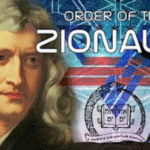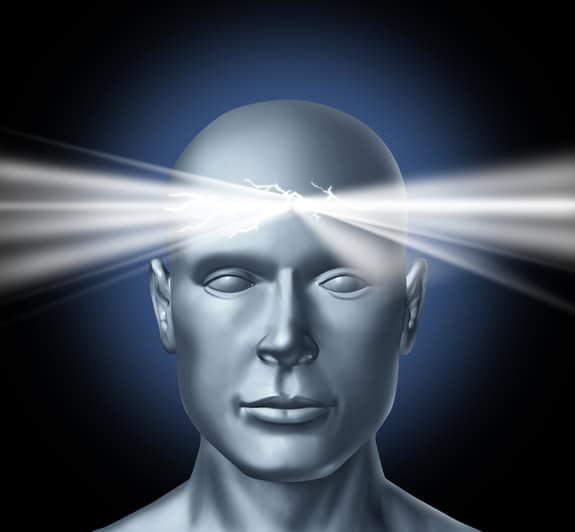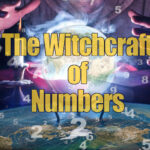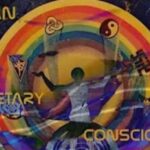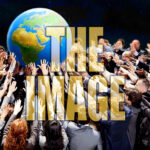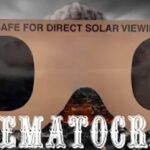Cris Putnam | Supernatural Worldview
In The Supernatural Worldview, I discuss Watchman Nee’s warning concerning the Latent Power of the Soul. Nee believed that humankind has a soul power that is remarkably similar to what parapsychologists have labeled Psi. Nee believed that in the end times this soul power would be apprehended by evil supernaturalism for diabolic ends. In order to test Nee’s theory concerning soul power, I researched the best evidence available from parapsychology. It turns out that laboratory experiments confirm that humans have the ability to sense the future, something called presentiment (e.g. premonition or precognition). Of course, psuedo-skeptic debunker types like James Randi call it “woo” but they are increasingly discredited by repeated laboratory experiments and meta-analysis. The article below is representative of the trend and the paranormal paradigm shift.
Do Humans Have the Ability to Sense the Future?
This Survey of Experiments So Far Says….Yes!
Can we sense the future before it happens? That question was at the heart of a set of nine experiments that sparked widespread controversy and debate when Professor Daryl Bem published his results in the Journal of Personality and Social Psychology in 2011. The reason: Bem’s results were positive, suggesting that we can in some way do the seemingly impossible, and somehow ‘know’ (precognition) or ‘feel’ (presentiment) things before they even occur.
Latent Powers of the Soul |
Cris Putnam | Raiders News Update
Is it possible for thoughts to be projected across vast distances? Can someone leave his or her body and “see” things in a faraway land or even the future? Some may be surprised to learn The Supernatural Worldview of the Bible has always supported such ideas.
While Western scientific orthodoxy asserts that there are only five senses, there is surprising evidence for more. If Watchmen Nee was correct about the latent power of the soul, we would expect to find a growing body of evidence for these abilities. The soon-to-be released The Supernatural Worldview (coming May 15th) contains overwhelming evidence for the existence of abilities popularly labeled “telepathy” and “remote viewing” and their relationship to dreams as well as “precognition” in supports of Nee’s prophetic warning. What I chronicle therein finds me behind closed doors examining well-documented, spontaneous cases, laboratory experiments, and even biblical analogs.
Take as example what is known as Remote Viewing, the ability to perceive out of sensory range. Sometimes this is connected to an out-of-body experience (OBE), but other times not. Parapsychologist Charles Tart recorded a remarkable instance of an OBE in a laboratory setting in which the subject was able to see something outside the range of access of the normal five senses:
On the first three laboratory nights, Miss Z reported that in spite of occasionally being “out,” she hadn’t been able to control her OBEs enough to be in position to see the target number (which was different each night). On the fourth night, at 5:57 a.m., there was a seven-minute period of somewhat ambiguous EEG activity, sometimes looking like stage 1, sometimes like brief waking states. Then Miss Z awakened and called out over the intercom that the target number was 25,132, which I wrote on the EEG recording. After she slept a few more minutes, I woke her so she could go to work, and this is what she reported regarding the previous awakening (Tart 1968, 17):
I woke up; it was stifling in the room. Awake for about five minutes. I kept waking up and drifting off, having floating feelings over and over. I needed to go higher, because the number was lying down. Between 5:50 and 6:00 a.m., that did it…I wanted to go read the number in the next room, but I couldn’t leave the room, open the door, or float through the door…. I couldn’t turn on the air conditioner!
The number 25,132 was indeed the correct target number near the ceiling above her bed.
[i]
This kind of evidence is rare. The fact that Miss Z reported the number was “lying down” rather than leaning against the wall as she expected (a detail verified by Tart) strongly suggests she somehow saw the card. What makes this especially compelling is that she couldn’t have gotten up to see the numbers, because she was hooked up to an EEG machine; any physical movement would have disturbed the recordings of her brainwaves. The odds of guessing a five-digit number are one hundred thousand to one. Although the distinction is somewhat arbitrary, the term remote viewing was invented to distinguish it from clairvoyance. It has received a lot of attention due to its modern use by intelligence agencies.
Remote viewing was popularized following the declassification of documents related to the Stargate Project, a $20-million-dollar CIA research program trying to determine possible military application of psychic phenomena. Much of the research was done at Stanford Research Institute (SRI) by Russell Targ and Harold Puthoff, two former laser physicists, and Edwin C. May, a former nuclear physicist. The projects spanned from the 1970s until 1995, and were primarily handled by the CIA and Defense Intelligence Agency (DIA). Some believe remote-viewing programs still exist, but are now deeply classified black projects.
The star remote viewers of the SRI studies were Ingo Swann, Pat Price, and Joe McMoneagle. Swann, who died February 1, 2013, was an artist known for psychic abilities who wrote a book called Natural ESP: The Esp Core and Its Raw Characteristics, and another called Penetration: The Question of Extraterrestrial and Human Telepathy that discussed extraterrestrial life. The latter work suggests that Swann was contacted by nonhuman entities in the guise of space aliens, an idea explored in my former work, Exo-Vaticana with Thomas Horn. Swann came to the attention of Targ and Puthoff when he demonstrated his ability to intentionally change the readings of Superconducting Quantum Interference Device (SQUID), which was buried deep underneath the Stanford physics building and shielded from electromagnetic influence by several layers of thick armor. Swann remotely viewed the SQUID and drew accurate pictures of its interior. Even more, he was able to influence its sinusoidal output, which was normally a consistent and predictable sine wave. When Swann projected his consciousness toward it, the wave doubled in frequency. He was able to repeat it at will, and the wave returned to normal frequency when he stopped. This was documented by several technical experts and recorded by Russell Targ.[ii] The successful experiments with Swann led to a visit from two employees of the CIA’s Directorate of Science and Technology. Swann’s demonstrable ability to view locations all over world is what purportedly got the project off the ground. The initial CIA-funded project was later renewed and expanded. A number of CIA officials, including John N. McMahon (later the CIA’s deputy director), became strong supporters of the program. It is beyond question that significant evidence for psi drove the funding.
Pat Price was a retired police commissioner from California who had used his psychic abilities to solve crimes. While working for SRI, he was asked to investigate the kidnapping of Patricia Hearst, the teenaged newspaper heiress held hostage by the Symbionese Liberation Army in 1974. After a visit to the location of the kidnapping, Price correctly identified Donald DeFreeze out of forty mug shots. Also, he was able to lead police to the location of the car used in the crime.[iii] Price is best known for his sketches of cranes and gantries retrieved by remotely viewing secret Soviet research at Semipalatinsk behind Soviet lines. His highly accurate sketches preceded the CIA intelligence photographs that confirmed them by many years.
Joe McMoneagle’s most amazing results include the time he drew the locations of a CIA team while the agents were hiding hundreds of miles away at Lawrence Livermore Laboratories in the San Francisco area. He drew many of the laboratory buildings and structures in specific detail. Then the team moved to a nearby Windmill Farm, and McMoneagle drew the windmill structures and landscape with astounding accuracy. In 1984, McMoneagle was awarded a legion of merit for “producing crucial and vital intelligence unavailable from any other source.”[iv] This sort of evidence cannot simply be brushed aside, but very few people are aware of it to take it seriously. Even U.S. presidents have testified to the veracity of remote viewing.
President Jimmy Carter, in an interview with GQ magazine, revealed the use of psychics in parapsychological espionage directed against the USSR. He recounted a specific incident he was personally involved with that produced viable intelligence:
GQ: One of the promises you made in 1976 was that if you were elected, you would look into the reports from Roswell and see if there had been any cover-ups. Did you look into that?
Carter: Well, in a way. I became more aware of what our intelligence services were doing. There was only one instance that I’ll talk about now. We had a plane go down in the Central African Republic—a twin-engine plane, small plane. And we couldn’t find it. And so we oriented satellites that were going around the earth every ninety minutes to fly over that spot where we thought it might be and take photographs. We couldn’t find it. So the director of the CIA came and told me that he had contacted a woman in California that claimed to have supernatural capabilities. And she went in a trance, and she wrote down latitudes and longitudes, and we sent our satellite over that latitude and longitude, and there was the plane.
GQ: That must have been surreal for you. You’re the president of the United States, and you’re getting intelligence information from a woman in a trance in California.
Carter: That’s exactly right.[v]
Biblical Examples?
In the Old Testament, Samuel was called a “seer,” apparently because he was able to see what others could not, like the location of the lost donkeys of Saul:
Samuel answered Saul and said, “I am the seer. Go up ahead of me to the high place, and you will eat with me today; then I will send you away in the morning. I will tell you all that is on your mind. And as for your female donkeys that were lost three days ago, do not be concerned about them, because they have been found. For whom is all the desire of Israel? Is it not for you and for all the house of your father? (1 Samuel 9:19–20, LEB)
It isn’t clear that this entails remote viewing, but it seems like something akin. Samuel was gifted by Yahweh to serve as a spokesperson for God. It is essential to remember that the biblical prophets derived their authority from God. With that understood, Scripture does seem to imply that some people have these abilities.
In the book of 2 Kings, Naaman, the second in command to the king of Syria, suffered from leprosy. He heard about Elisha, the Lord’s prophet, who could invoke Yahweh to heal the dreaded disease. When Naaman arrived at Elisha’s house bearing great sums of money, a messenger instructed Naaman to bathe seven times in the River Jordan. Because of his immense pride he went away angry, refusing to wash in the muddy river waters. His servants convinced him to do so, and God healed him. Naaman declared, “There is no God in all the world except in Israel” (5:15). Although Elisha had refused a monetary gift from Naaman, the prophet’s servant Gehazi secretly followed Naaman to ask for money.
Somehow, Elisha was able to follow Gehazi’s wrongful actions and confront him with specific details on his return. “Then he said to him, ‘Did not my heart go with you as the man turned from on his chariot to meet you? Is it time to take silver, clothes, olive orchards, vineyards, sheep, oxen, male slaves, and female slaves?’” (2 Kings 5:26). The passage gives the impression that Elisha saw exactly what went on out of his normal sensory purview. This gift was evidently a divinely ordained ability for a prophet.
The book of Revelation seems to be John’s accounting of an OBE:
After this I looked, and behold, a door standing open in heaven! And the first voice, which I had heard speaking to me like a trumpet, said, “Come up here, and I will show you what must take place after this.” At once I was in the Spirit, and behold, a throne stood in heaven, with one seated on the throne. (Revelation 4:1–2, underline added)
This has been described as a “state in which the ordinary faculties of the flesh are suspended, and the inward senses opened.”15 In this altered state of consciousness, God brings a man’s spirit into direct contact with the invisible spiritual world. According to biblical scholar Robert Thomas:
“In the spirit” is descriptive of the prophetic trance into which the prophet’s spirit entered. This miraculous ecstatic state wrought by the Spirit of God was, to all intents and purposes, a complete translation from Patmos to heaven. All of the prophet’s senses were operative: his ears heard, his eyes saw, and his emotions were as real as though his body was literally in heaven instead of remaining on Patmos.[vi]
John seems to be describing an altered state of consciousness similar to remote viewing. Many evangelicals have a fear of mysticism, probably from its association with Roman Catholic monasticism. Even so, Acts 10:10 speaks of Peter “falling into a trance” while praying. This was not a nighttime dream, but an altered state of consciousness induced by prayer. Peter describes it as an ecstatic vision using the Greek term ekstasis. In the first century, the term generally denoted “a vision accompanied by an ecstatic psychological state.”[vii] While these examples certainly don’t suggest it is wise to attempt remote viewing for one’s own ends, they do demonstrate the existence of such phenomena is consistent with the Bible and a Supernatural Worldview. If one isn’t careful, he or she could beckon an uninvited guest.
Why have Christians usually associated clairvoyance with demonization? Other than divinely inspired prophecy, the Bible doesn’t tell us much. However, there is an instructive incident in Acts 16. On one of Paul’s visits to the Jewish place of prayer, he and his cohorts were met by a slave girl who had the gift of second sight and earned money for her owners by giving readings. The text reads, “And it came to pass, as we went to prayer, a certain damsel possessed with a spirit of divination met us, which brought her masters much gain by soothsaying” (Acts 16:16). The girl’s gift is attributed by Luke to a spirit of divination, penuma pythona, literally, “a spirit, a Python.” The background of this attribution reaches back into classical Greek mythology.
The Python was a legendary dragon serpent that guarded the temple and oracle of Apollo, located on the slope of Mt. Parnassus just north of the Gulf of Corinth. The giant serpent was supposed to have lived at the foot of Mt. Parnassus and to have eventually been killed by Apollo. The Latin scholar Gaius Julius Hyginus (64 BC–AD 17) elaborates:
Apollo exacted vengeance for his mother. For he went to Parnassus and slew Python with his arrows. (Because of this deed he is called Pythian.) He put Python’s bones in a cauldron, deposited them in his temple, and instituted funeral games for him which are called Pythian.[viii]
Accordingly, the name is related to the site of Delphi(Pytho), the most important oracle in the classical Greek world, and is also associated with the putrid corpse of the serpent dragon stored in the cauldron (from the verbpythein, “to rot”). While the myth is well known, could it have any historical basis?
The historian Strabo (64 BC–AD 24) preserves a more ancient Greek historian, Ephorus’ (400–330 BC), interpretation of the classical legend. While reading this account, it is essential to note that Ephorus had previously issued a complaint concerning those who mix mythology and history, a seeming inconsistency as he proceeds to do just that, as Strabo perplexingly comments:
And that at this time Apollo, visiting the land, civilized the people by introducing cultivated fruits and cultured modes of life; and that when he set out from Athens to Delphi he went by the road which the Athenians now take when they conduct the Pythias; and that when he arrived at the land of the Panopaeans he destroyed Tityus, a violent and lawless man who ruled there; and that the Parnassians joined him and informed him of another cruel man named Python and known as the Dragon, and that when Apollo shot at him with his arrows the Parnassians shouted “Hie Paean” to encourage him (the origin, Ephorus adds, of the singing of the Paean which has been handed down as a custom for armies just before the clash of battle); and that the tent of Python was burnt by the Delphians at that time, just as they still burn it to this day in remembrance of what took place at that time. But what could be more mythical than Apollo shooting with arrows and punishing Tityuses and Pythons, and travelling from Athens to Delphi and visiting the whole earth? But if Ephorus did not take these stories for myths, by what right did he call the mythological Themis a woman, and the mythological Dragon a human being—unless he wished to confound the two types, history and myth?[ix]
This begs the question of whether Ephorus was demythologizing the Python legend or, more interestingly, if the serpent dragon actually took the form of a man.Reptilian shape shifters or something like the nachash? Etymologically, there appears a semantic development from the specific serpent dragon to an oracle inspiring spirit in general. A massive, tenth-century Byzantine encyclopedia of the ancient Mediterranean world known as the Suda defines the Python as a daimonion mantikos. The first word is the root of the modern term “demon,” examined in detail in my upcoming book, and the second, the Greek mantikos, is “prophetic, oracular, of or for a soothsayer,” from the word “mantis,” or “prophet”; literally, it means “one touched by divine madness.”[x] In AD 60 or so when Luke wrote Acts, a person with “a spirit of the Python” was a demon-possessed person through whom a Python spirit spoke. This is corroborated by early writers like Pseudoclementine, Origen, and Jerome, who wrote of “Python-demons” inspiring pagan prophetic oracles.[xi] Certainly, the practices of contemporary channelers and remote viewers do not significantly differ from the ancient world. Even so, perhaps it is pressing too hard to apply this text to clairvoyance across the board.
But What Does This Mean For Us?
It might come as a surprise that some very conservative theologians allow for innate human abilities—along the lines of Watchman Nee’s latent power of the soul—as an explanation for some forms of extrasensory perception. A contemporary and friend of the celebrated evangelist D. L. Moody, Frederick Brotherton Meyer (1847–1929), was a Baptist pastor and evangelist during the heyday of the popular spiritualist movement of the nineteenth century. In a polemic against spiritualism, Meyer railed against the mediums, but conceded that psi abilities are not necessarily occult:
Neither telepathy nor clairvoyance appears deserving of our censure. They are natural properties of the mind, and only reveal the wondrous faculties with which the Almighty has endowed us. If it is possible to send out circling waves of wireless telegraphy, which widen out as the rings from a stone cast into a pond Or lake, and can only be appreciated where the receiver and the transmitter are perfectly attuned, so it is not difficult to believe that our minds are constantly radiating motions and influences through our brains, which are perceived by sympathetic correspondence with other brains.[xii]
Meyer allowed that telepathy and clairvoyance are human abilities endowed by the Creator. While dominant Western scientific consensus denies these abilities, the evidence for them is quite compelling and consistent with biblical revelation. While this may raise the hackles of a few critics, the biblical worldview has more in common with the findings of parapsychology than philosophical naturalism, and theologians have much to learn from the research. My conviction is that the Christian has nothing to fear from the pursuit of truth, even from unconventional sources… such as I infiltrated… where I found what I did not expect.




